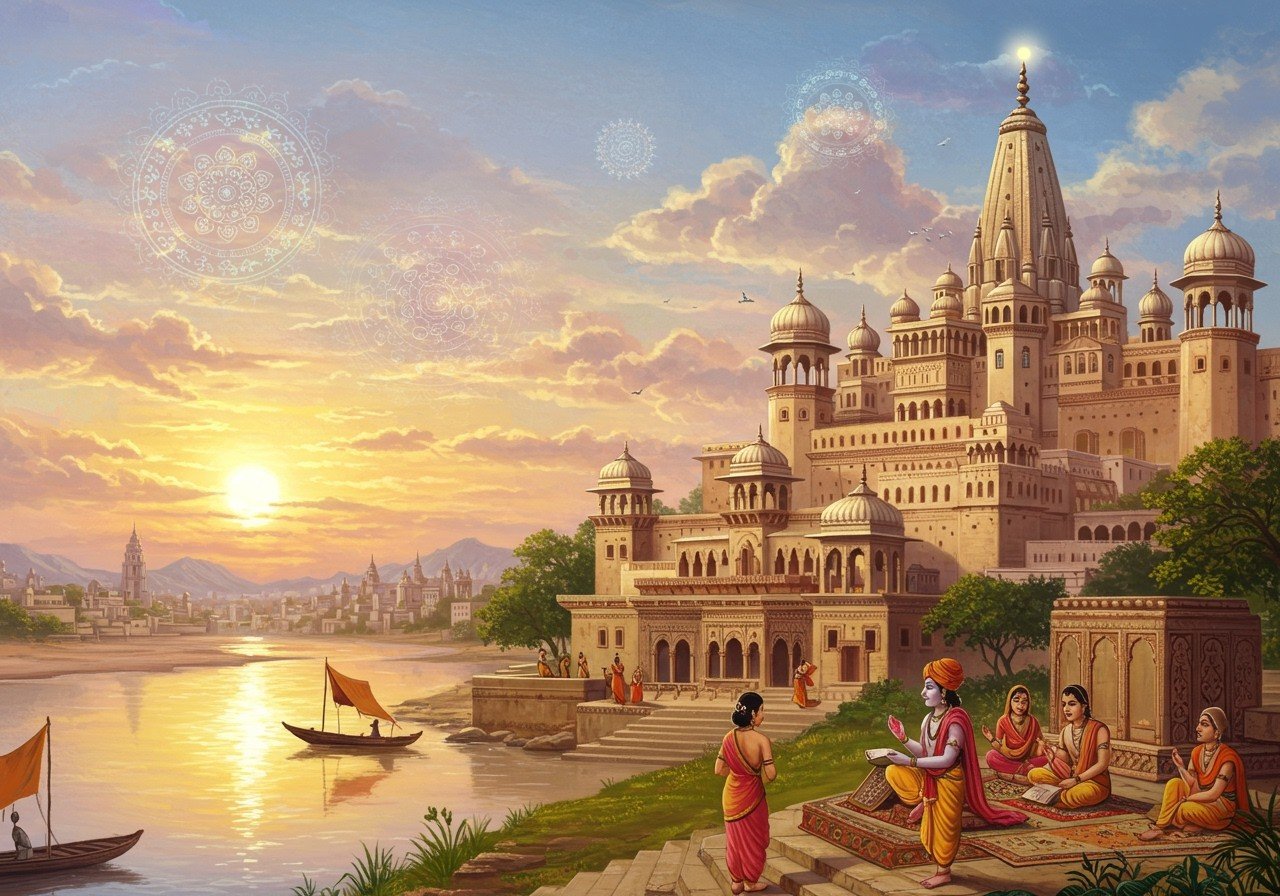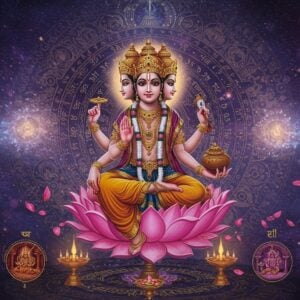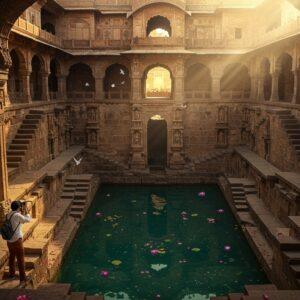
Hastinapura, nestled in Uttar Pradesh’s Meerut district, is a city where the echoes of history and the whispers of mythology intertwine. The very name, “City of Elephants,” evokes images of majestic creatures, symbols of strength and power, deeply resonating with the city’s legendary stature in Indian culture. It’s a place where the past seamlessly merges with the present, offering a captivating journey through time.
Tracing the Historical Roots of Hastinapura
Hastinapura’s historical narrative is intricately woven with the saga of the Kuru Kingdom, as recounted in revered scriptures like the Mahabharata and the Puranas. This ancient city served as the backdrop for pivotal events that shaped the course of history, including the birth of the 100 Kaurava brothers. Archaeological excavations have unearthed artifacts belonging to the Ochre Coloured Ware culture, providing glimpses into its ancient origins and the lives of its early inhabitants. The discovery of Painted Grey Ware in the 1950s by archaeologists like B.B. Lal further connects Hastinapura to the Vedic Period, bridging the gap between myth and reality and offering a fascinating window into a vibrant ancient society. This shows how Hastinapura is more than just a myth; it’s a historical reality.
Exploring the Mythological Significance
In the realm of mythology, Hastinapura occupies a central position. The legacy of King Hasti, whose name graces the city, continues to resonate through the ages. Hastinapura witnessed the genesis of the legendary rivalry between the Kauravas and Pandavas, a conflict that ultimately culminated in the epic Kurukshetra War. The Pandeshwar Mahadev temple stands as a testament to Yudhishthira’s fervent prayers to Lord Shiva, seeking divine blessings for victory. These stories have been passed down through generations, shaping the cultural landscape of India.
Modern-Day Relevance of Hastinapura
Today, Hastinapura thrives as a revered pilgrimage destination for both Hindus and Jains. The city’s spiritual aura is enhanced by the presence of numerous temples, including the ancient Pandeshwar Temple and the Karna Temple. For Jains, Hastinapura holds special significance as the birthplace of three Tirthankaras. Temples like the Shri Digamber Jain Mandir stand as sacred spaces for devotees, adding to the city’s spiritual richness. Amidst this historical and spiritual landscape lies the Hastinapur Wildlife Sanctuary, a haven of ecological diversity. Modern infrastructure ensures seamless accessibility for pilgrims and tourists alike, facilitating continued engagement with Hastinapura’s storied past.
Looking for sacred items to enhance your spiritual practices? Visit poojn.in for a wide selection of authentic puja samagri.
Religion and Rituals in Hastinapura
Hastinapura’s religious importance transcends its mythological connections. Devotees from all corners of India journey to its ancient temples, seeking blessings and participating in time-honored rituals. These sacred sites serve as vital links to the divine, fostering spiritual connection and cultural continuity. The rituals performed here are not mere customs; they are expressions of faith and devotion that have resonated through generations.
Enhance your understanding of Hindu rituals and deities with poojn.in’s insightful articles on Lord Shiva and Indra Dev. Explore our collection of holy idols to bring blessings into your home.
Cultural Events and Festivals of Hastinapura
Hastinapura’s cultural calendar is dotted with vibrant celebrations that bring its rich heritage to life. Dramatic reenactments of episodes from the Mahabharata captivate audiences, while lively local fairs create spaces for communal harmony and shared experiences. These events serve as powerful reminders of Hastinapura’s enduring legacy, ensuring that its stories continue to inspire and resonate. From traditional dances to religious processions, these festivities offer a glimpse into the heart and soul of Hastinapura.
Celebrate Indian culture and traditions with authentic attire from poojn.in.
Hastinapura’s Timeless Legacy: A Beacon of Indian Culture
Hastinapura stands as a testament to India’s rich cultural tapestry, a place where history, mythology, and modernity converge. Its majestic past and vibrant present beckon us to delve deeper into its layers, offering a profound connection to the ancient world that continues to shape our beliefs and traditions. Whether we wander through its sacred temples or immerse ourselves in the tranquility of its wildlife sanctuary, Hastinapura offers a transformative journey through time, enriching our understanding of India’s epic heritage. By embracing the city’s timeless legacy, we honor the traditions that have endured through the ages, ensuring that Hastinapura remains an integral part of our cultural identity for generations to come.
FAQs on Hastinapura: Delving into History, Mythology, and Modern Significance
What is the meaning of Hastinapura?
Hastinapura, translating to “City of Elephants,” derives its name from the Sanskrit words “Hastina” (elephant) and “Pura” (city). This name reflects the city’s historical grandeur and the majestic presence of elephants, symbols of power and prosperity.
Why is Hastinapura important in the Mahabharata?
Hastinapura serves as the pivotal capital city in the epic Mahabharata. It is the royal seat of the Kuru dynasty and forms the backdrop for many of the epic’s most significant events, shaping the narrative and the destinies of its characters. The city’s prominence in the Mahabharata underscores its importance in Indian mythology and history.
What is the modern significance of Hastinapura?
Today, Hastinapura holds immense historical and archaeological significance. It draws historians, archaeologists, tourists, and those captivated by the Mahabharata, offering a tangible link to the epic’s world. Its continued relevance as a pilgrimage site highlights its enduring spiritual and cultural importance.
Have there been any archaeological excavations in Hastinapura?
Yes, several archaeological excavations have been conducted in Hastinapura. These explorations have yielded valuable insights into the ancient city’s layout, architecture, culture, and daily life, providing a deeper understanding of its historical context and evolution.
Is Hastinapura a real place?
Yes, Hastinapura is a tangible location situated in present-day Uttar Pradesh, India. While steeped in mythology, it is a real place with historical and archaeological significance, allowing visitors to connect with its rich past.
How does mythology describe Hastinapura?
Mythological accounts portray Hastinapura as a magnificent city adorned with opulent palaces, bustling marketplaces, and verdant gardens. Its depiction as a thriving center of power and culture further cements its place in Indian mythology, captivating the imagination and inspiring countless stories.
Can visitors explore Hastinapura today?
Yes, visitors can explore the historical remnants of Hastinapura today. The site features ancient ruins and temples, providing a tangible connection to its rich past and allowing visitors to step back in time.
What are the key attractions in Hastinapura?
Key attractions in Hastinapura include the revered Pandeshwar Temple and the ancient ruins, both of which stand as testaments to the city’s historical grandeur and enduring spiritual significance. These sites offer a glimpse into Hastinapura’s layered past, inviting exploration and reflection.
For a truly immersive spiritual experience, explore the authentic puja items and insightful resources available at poojn.in. Connect with us at 03369029784 or via WhatsApp at 9476142738 for personalized guidance and assistance.


